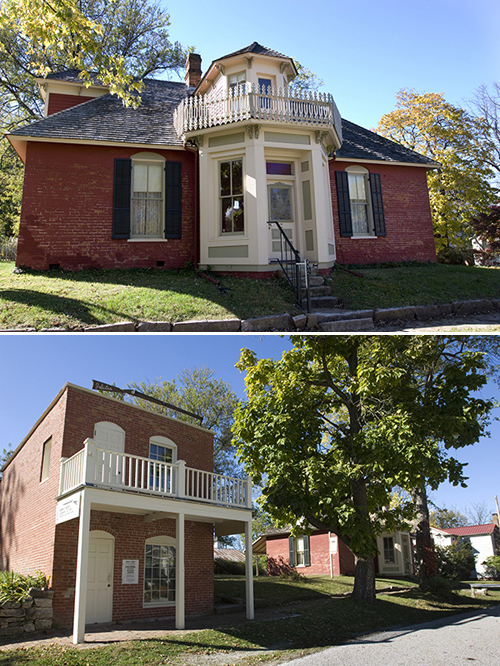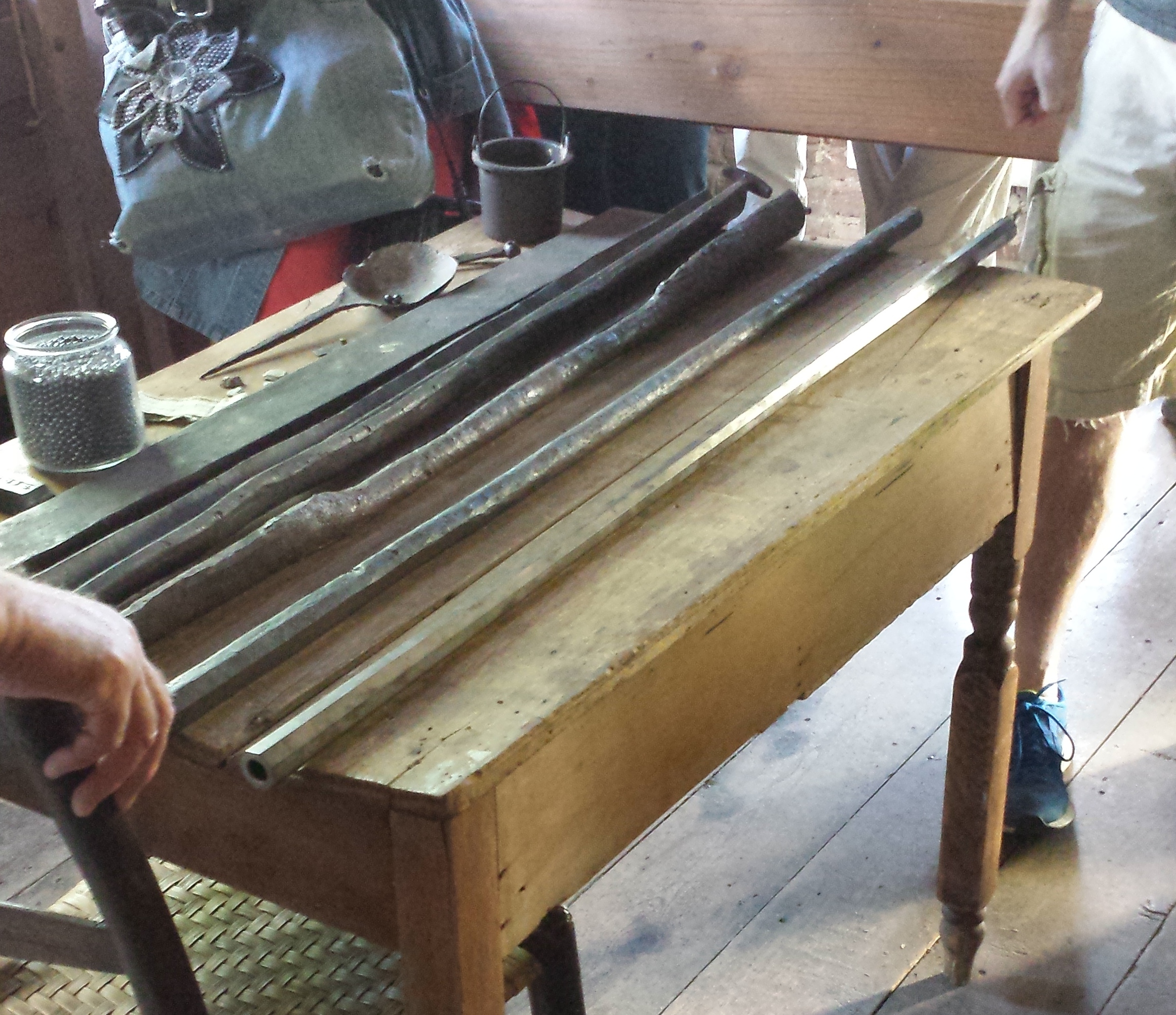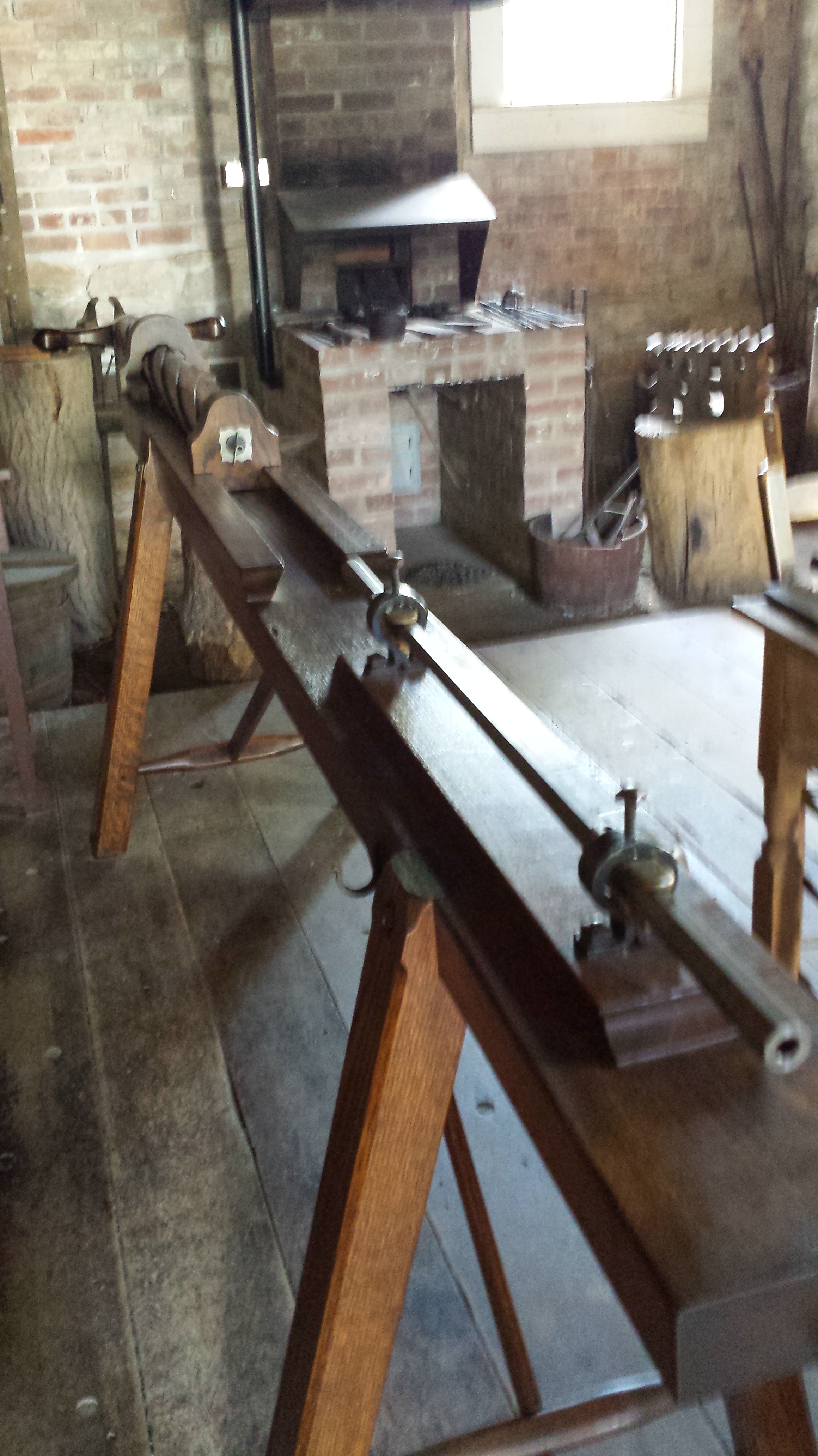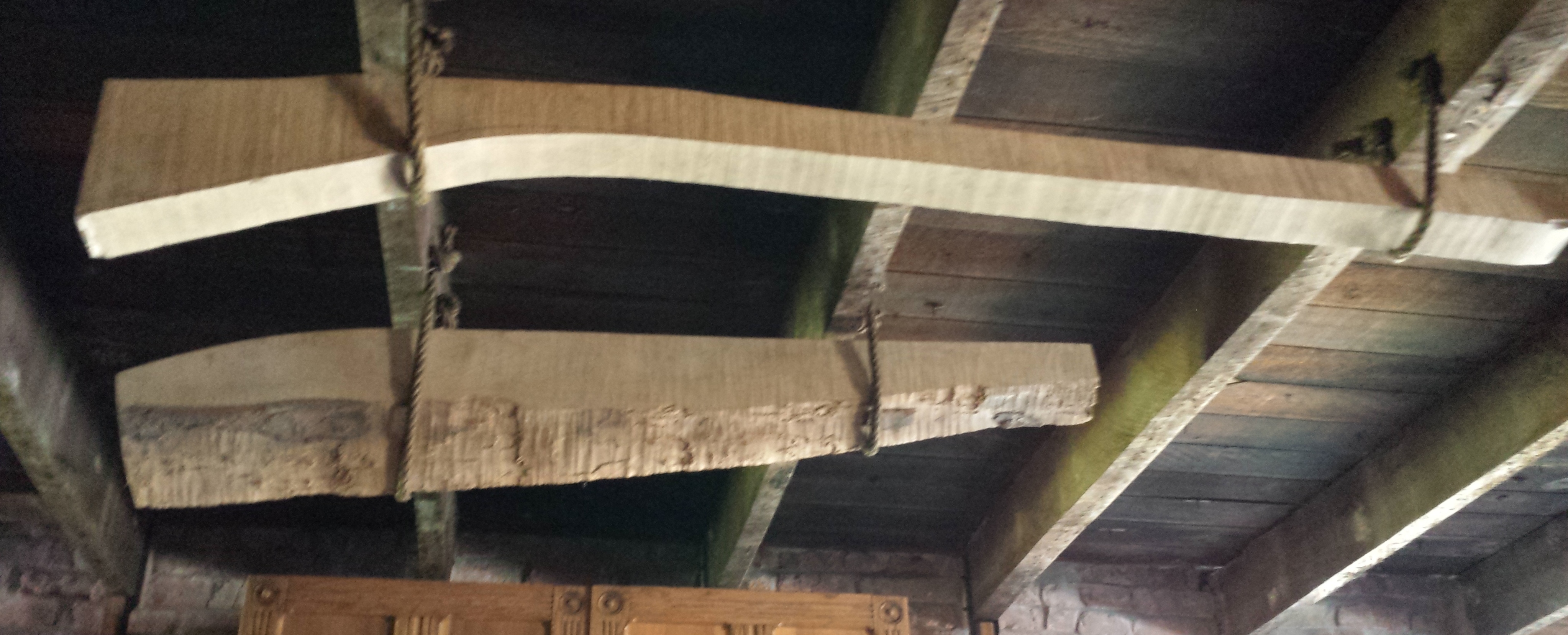
I had the pleasure of spending a weekend in Arrow Rock, Missouri, earlier this month at a writing workshop sponsored by Friends of Arrow Rock. Arrow Rock is where my forthcoming novel, Lead Me Home, begins. Arrow Rock has preserved many of its original buildings from the mid-19th century, and I enjoyed the opportunity to soak up the atmosphere of what my emigrant characters must have experienced as they prepared for their journey in 1847.
I researched Arrow Rock while I wrote my novel and learned quite a bit about its history. One of the tidbits I learned during my research was that John Sites, Jr., owned a gun shop in Arrow Rock during the 1840s. I even toyed with the idea of having my protagonist buy a rifle from Sites before he set out for Oregon. But I decided that including this scene would slow the novel’s pace, so I didn’t write it.
My time in Arrow Rock this month allowed a tour of the Sites Gun Shop. I was fascinated to learn about the manufacture of rifles. If I had gone on the tour before writing my book, I might have made a different decision about including the scene with Sites. Part of the fun of writing historical fiction is dropping these pearls of fact into the story.
But since Mr. Sites and his gun shop never made it into my novel, I’ll tell my blog readers about him today.
John Sites, Sr., was a German immigrant who moved to Missouri in 1834. He owned a gunsmith shop in Boonville, Missouri. His son, John Sites, Jr., opened a gunsmith shop in Arrow Rock in 1844—this is the John Sites that my characters would have met.
At the time, Arrow Rock was an important waypoint on the Santa Fe trail, and was poised to serve the same purpose on the Oregon and California trails. If I had included a scene in my novel with characters buying guns from Mr. Sites, it would have been accurate—his guns have have been found in several western locations, including California, Oregon, Montana, and New Mexico.

What fascinated me the most on my tour of Sites’s gun shop was the exhibit showing how he shaped his gun barrels. I love seeing products get made, and touring plants was one of my favorite activities when I worked at Hallmark Cards. Watching greeting cards come through the presses and plastic goods go through the extrusion machines was much more interesting than my usual work of drafting legal briefs or HR policies.

Mr. Sites started with steel bars and ended with bored rifle barrels. The photograph above shows the various stages in the process—from steel bar, to partially shaped bar, to crude tube, to unbored barrel. Then the barrel was placed on the boring machine and the final barrel was produced.
Unfortunately for Mr. Sites, with the advent of modern manufacturing plants, the gunsmith craft became less important. In his lifetime alone, guns went from finely crafted goods requiring years of expertise to create to mass produced products. When he died in 1904, his inventory of gun stock blocks was worth just 25 cents.

While it is sad to see pieces of history disappear, the changes are often the result of progress. We must move on, but places like Arrow Rock are valuable because they preserve times past. Someday our marvels, too, will be relics. Already, the early PCs and cell phones of our lifetimes seem like antiquities. Did you ever think we would carry the world’s knowledge in a smartphone smaller than a deck of cards?
What historical items or places have you seen that pique your interest?




Thanks for sharing Arrow Rock with us, Theresa. Since I was a kid, I’ve been fascinated by Mt. Vernon.
I love Mount Vernon also — I’ve been on the tour several times. It’s always good.